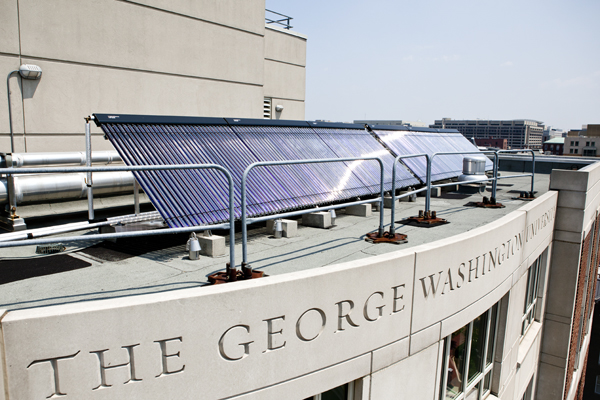Scientists have invented a high-tech solar cell that when combined with concentraor photovoltaic panels, can convert energy at an efficiency rate that is almost twice that of existing solar cells.
In a new report published in a journal dubbed Advanced Energy Materials, scientific experts based at the George Washington University (GWU) have developed an advanced solar cell capable of converting direct sun rays into electricity at efficiency levels of 44.5%. At this rate, this could just be the next biggest innovation in the world of solar.
Concentrator Photovoltaic Panels
One of the distinctive features of this prototype is the integration of concentrator photovoltaic (CPV) panels which are not used in solar panels installed on Australian rooftops.
Concentrator photovoltaic panels features lenses that concentrate sunlight onto smaller solar cells (less than one millimeter squared in size) built within a single device that can trap almost all the energy present within the solar spectrum.
How the solar cell works
Each layer features specialized materials, usually from the family of materials that contain gallium antimonide (GaSb) substrates which are common in infrared lasers and photodetector applications.
This makes the inbuilt cell into a sieve, absorbing the energy emanating from a given set of wavelengths. By the time the light penetrates through the stack, a slightly below 50% of all the energy absorbed will have been converted into electricity.
With that in mind, it’s worth noting that the solar cells on the market today are only capable of converting about a quarter of all the available solar energy into real electricity.
The most crucial feature of the new solar cells is their ability to absorb sunlight from wavelengths that can’t be tapped by the ordinary solar cells.
This is made possible by the stacked structure of the cell and the stacking procedure employed. This technique is called ‘transfer-printing’ and it allows easy high-precision 3D assembly of the tiny devices.
This then allows the device to absorb almost the whole spectral range including both the shorter and longer wavelengths.
As Matthew Lumb the lead author of the study explained, “about 99% of the power contained in direct sunlight reaching the surface of Earth falls between wavelengths of 250 nm and 2500 nm”.
The current solar cells are made from conventional materials which cannot fully capture this type of spectral range.
“Our new device is able to unlock the energy stored in the long-wavelength photons, which are lost in conventional solar cells, and therefore provides a pathway to realizing the ultimate multi-junction solar cell,” Lumb stated.
However, the new technology has one major downside—it is expensive to manufacture. The team behind its innovation says that even though it disregarded the cost element, their main focus was to reveal that the efficiency of the existing solar panels could be increased and maximised.
All in all, the scientist hope that the technique utilised for this specific solar cell can be enhanced and perfected so as to deliver a more cost-efficient and practical commercially available solution, to be used in conjunction with concentrator photovoltaic panels.



